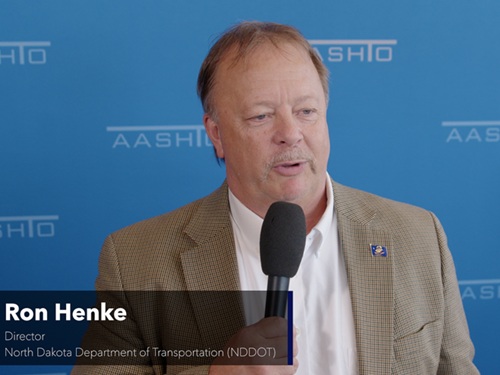The U.S. Department of Transportation issued a free “toolkit” on February 2 to help rural communities take full advantage of the $7.5 billion in federal funding set aside in the $1.2 trillion Infrastructure Investment and Jobs Act or IIJA to build out a national network of 500,000 for electric vehicle or EV charging stations.
[Above photo by the Maine DOT]
Of that $7.5 billion, states get $4.75 billion via formula funding while distributing the remaining $2.5 billion via a competitive grant program. That’s why USDOT said in a statement that its new toolkit – entitled ‘Charging Forward: A Toolkit for Planning and Funding Rural Electric Mobility Infrastructure’ – is designed to help community members, towns, businesses, planning agencies, and others connect with private sector partners and others to win grants to fund EV charging projects.
[Editor’s note: USDOT plans to host a free webinar providing more details on its new rural EV charging network toolkit on February 9 at 1:30 pm ET. Click here to register.]

The new toolkit follows other recent federal efforts to support expansion of EV infrastructure, including a memorandum of understanding signed by USDOT and the U.S. Department of Energy in December 2021 to help the two agencies collaborate on implementation the IIJA’s EV provisions.
USDOT added that it developed this new toolkit via the Rural Opportunities to Use Transportation for Economic Success or ROUTES Initiative launched by the agency in 2019 to help it coordinate rural infrastructure policy – noting that the ROUTES Initiative in now codified within the IIJA.
There are, however, an array of obstacles that face efforts to build out a national EV charging network – some of which the American Association of State Highway and Transportation Officials outlined in a January 25 letter to the Federal Highway Administration.
AASHTO noted that while state DOTs “readily support” the Biden administration’s “ambitious goal” of building a new national network of 500,000 EV chargers by 2030, “many challenges must be overcome,” both technical and logistical, in order to make that goal a reality.

Those obstacles include the capacity of the electrical grid and its proximity to potential charging stations, especially in rural and underserved areas; industry capacity to meet the sudden increase in demand for EV supply equipment; and coordination, on a huge scale, with non-traditional stakeholders that have existing business models and supply chains.
“AASHTO and its members believe the success of this program depends on EV charging infrastructure reliability and accessibility,” the group said in its letter.
“According to surveys and information collected by a number of state DOTs, five miles is too far for EV consumers to travel off the highway to find a charger,” AASHTO said. “Some exceptions must be made – for example in rural areas – but otherwise chargers need to be located as close as possible to the interstate highway system.”
 Nation
Nation
North Dakota DOT Profiled in State DOT Update
July 3, 2025 Nation
Nation

